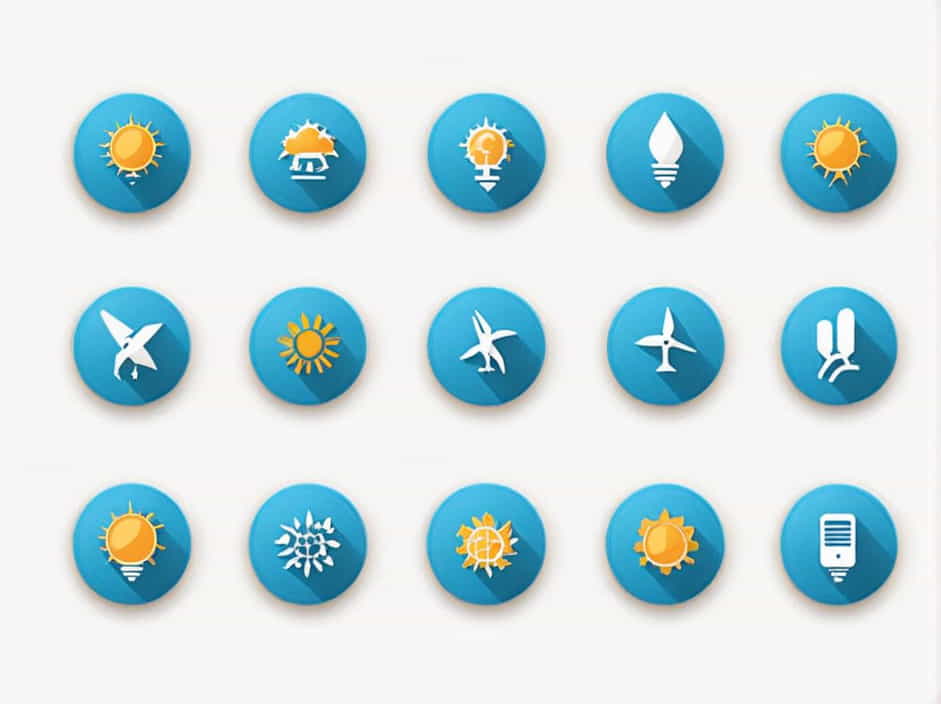Energy is essential for daily life, powering everything from homes to industries. It comes in two main forms: renewable energy and nonrenewable energy. Understanding the uses of these energy sources helps us make informed decisions about energy consumption and sustainability.
This topic explores the various uses of renewable and nonrenewable energy, their advantages, and their impact on the environment and economy.
What Is Renewable Energy?
Definition of Renewable Energy
Renewable energy comes from natural sources that are continuously replenished. These sources do not deplete over time and have minimal environmental impact.
Types of Renewable Energy
-
Solar Energy – Derived from the sun.
-
Wind Energy – Generated by the movement of air.
-
Hydropower (Water Energy) – Comes from flowing or falling water.
-
Biomass Energy – Obtained from organic materials.
-
Geothermal Energy – Extracted from heat within the Earth.
-
Tidal and Wave Energy – Produced from ocean tides and waves.
Uses of Renewable Energy
1. Electricity Generation
Renewable energy is widely used to produce electricity for homes, businesses, and industries.
-
Solar panels convert sunlight into electricity.
-
Wind turbines generate power from the wind.
-
Hydropower plants use moving water to drive turbines.
2. Heating and Cooling
Many renewable sources provide heating and cooling solutions.
-
Solar water heaters are used in homes and hotels.
-
Geothermal heat pumps regulate indoor temperatures efficiently.
-
Biomass stoves provide cooking and heating in rural areas.
3. Transportation
Renewable energy is increasingly used in the transportation sector.
-
Electric vehicles (EVs) run on renewable electricity instead of fossil fuels.
-
Biofuels such as ethanol and biodiesel reduce reliance on gasoline and diesel.
-
Hydrogen fuel cells provide clean energy for cars, buses, and trains.
4. Agriculture and Irrigation
Renewable energy supports farming activities.
-
Solar-powered irrigation pumps help farmers in remote areas.
-
Windmills provide mechanical energy for grinding grains and pumping water.
-
Biogas plants use animal waste to generate energy for cooking and electricity.
5. Industrial Applications
Industries are increasingly adopting renewable energy to reduce costs and emissions.
-
Solar and wind power provide energy for manufacturing plants.
-
Geothermal heat is used in food processing and metal refining.
-
Hydropower supports operations in mining and paper production.
6. Public Services and Infrastructure
Governments use renewable energy for public services.
-
Solar-powered streetlights enhance urban safety.
-
Wind energy powers remote telecommunications towers.
-
Green buildings use solar and geothermal energy for efficiency.
What Is Nonrenewable Energy?
Definition of Nonrenewable Energy
Nonrenewable energy comes from finite resources that take millions of years to form. These resources will eventually be depleted, making them unsustainable in the long run.
Types of Nonrenewable Energy
-
Coal – A solid fossil fuel used for electricity and industry.
-
Oil (Petroleum) – A liquid fossil fuel used for transportation and manufacturing.
-
Natural Gas – A gaseous fossil fuel used for heating and power generation.
-
Nuclear Energy – Derived from uranium, used in power plants.
Uses of Nonrenewable Energy
1. Electricity Production
Most of the world’s electricity still comes from nonrenewable sources.
-
Coal-fired power plants generate electricity for cities.
-
Natural gas power plants produce cleaner energy than coal.
-
Nuclear power plants provide a steady supply of electricity.
2. Transportation
Nonrenewable energy dominates the global transportation sector.
-
Gasoline and diesel power cars, trucks, and buses.
-
Aviation fuel is essential for airplanes.
-
Marine fuel is used in cargo ships and submarines.
3. Industrial Manufacturing
Industries rely on nonrenewable energy for large-scale production.
-
Petroleum-based chemicals are used to make plastics, fertilizers, and medicines.
-
Coal is used in steel and cement production.
-
Natural gas powers machinery and industrial furnaces.
4. Residential and Commercial Heating
Nonrenewable energy is a primary source of heating in many areas.
-
Natural gas furnaces heat homes and buildings.
-
Oil-based heating systems are used in colder regions.
-
Coal stoves provide heat in some rural areas.
5. Military and Defense
Many defense systems rely on nonrenewable energy.
-
Jet fuel powers fighter planes and military aircraft.
-
Diesel engines operate tanks, naval ships, and submarines.
-
Nuclear-powered submarines provide long-term energy without refueling.
6. Chemical and Pharmaceutical Industries
Nonrenewable energy sources play a crucial role in chemical production.
-
Oil and gas derivatives are used in medicines, cosmetics, and cleaning products.
-
Petrochemicals help manufacture synthetic fibers, rubber, and dyes.
Comparison: Renewable vs. Nonrenewable Energy
| Factor | Renewable Energy | Nonrenewable Energy |
|---|---|---|
| Availability | Unlimited supply | Finite and depleting |
| Environmental Impact | Low emissions, eco-friendly | High emissions, pollution |
| Cost Over Time | Decreasing due to technology | Rising due to resource depletion |
| Sustainability | Long-term solution | Unsustainable in the long run |
| Dependency | Reduces reliance on fossil fuels | High dependence on limited resources |
The Future of Energy: Transitioning to Sustainability
The shift towards renewable energy is essential for a sustainable future. Governments, businesses, and individuals are investing in clean energy solutions to reduce dependence on nonrenewable resources.
Key Developments in Renewable Energy
✔ Solar and wind energy are becoming cheaper and more efficient.
✔ Battery storage technology is improving for consistent energy supply.
✔ Green hydrogen is emerging as a clean fuel alternative.
✔ Electric vehicles (EVs) are reducing the need for gasoline and diesel.
The Role of Governments and Policies
✔ Many countries are setting renewable energy targets.
✔ Subsidies and incentives promote clean energy adoption.
✔ Carbon taxes encourage industries to shift to greener alternatives.
Both renewable and nonrenewable energy play crucial roles in powering the world. While nonrenewable energy is still widely used, the future lies in renewable energy due to its sustainability and lower environmental impact.
As technology advances, more industries and households will transition to renewable energy solutions, leading to a cleaner, greener, and more energy-secure world. Investing in renewable resources today will ensure a brighter future for generations to come.
